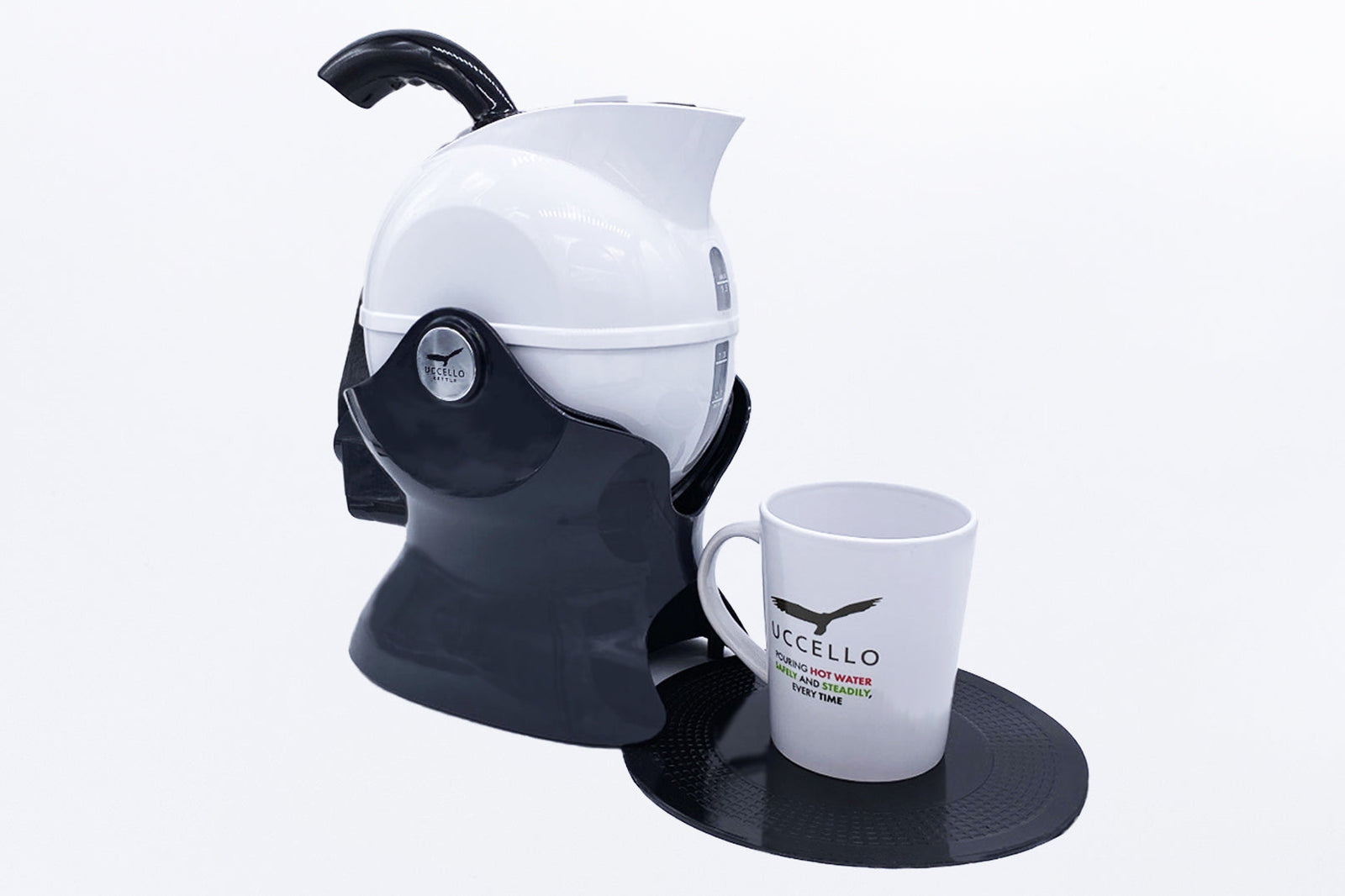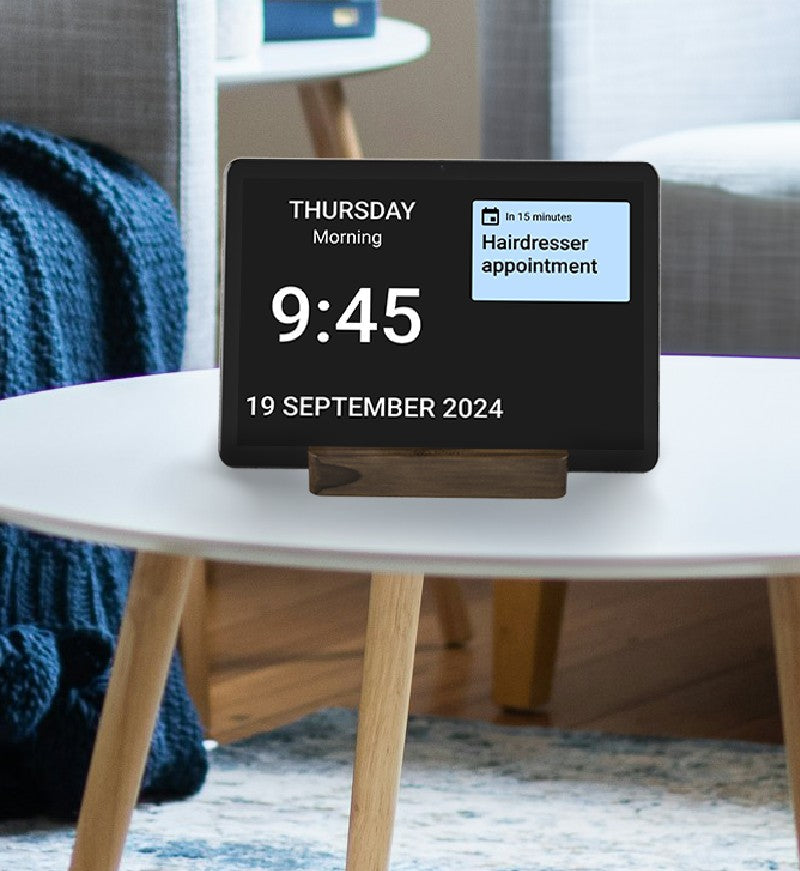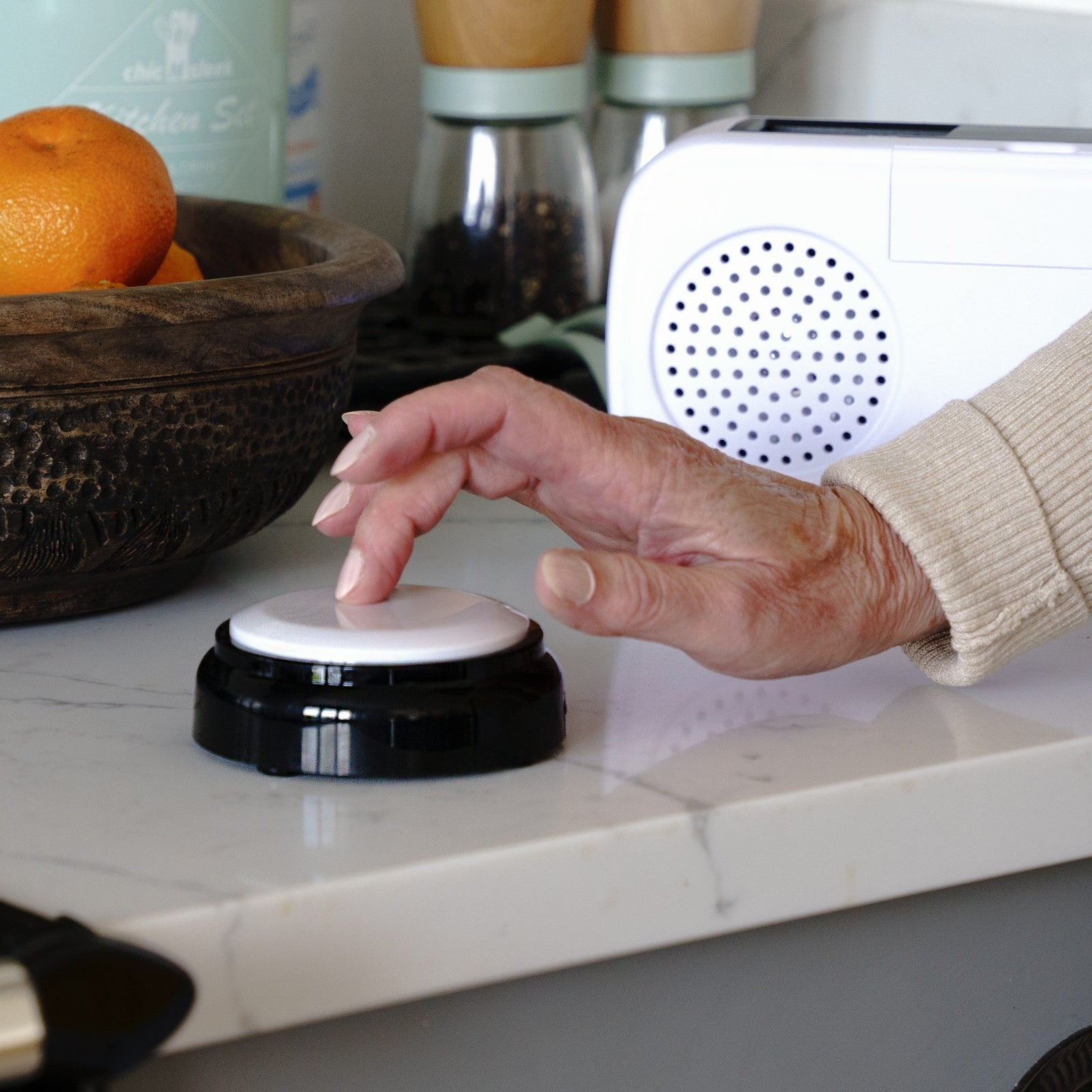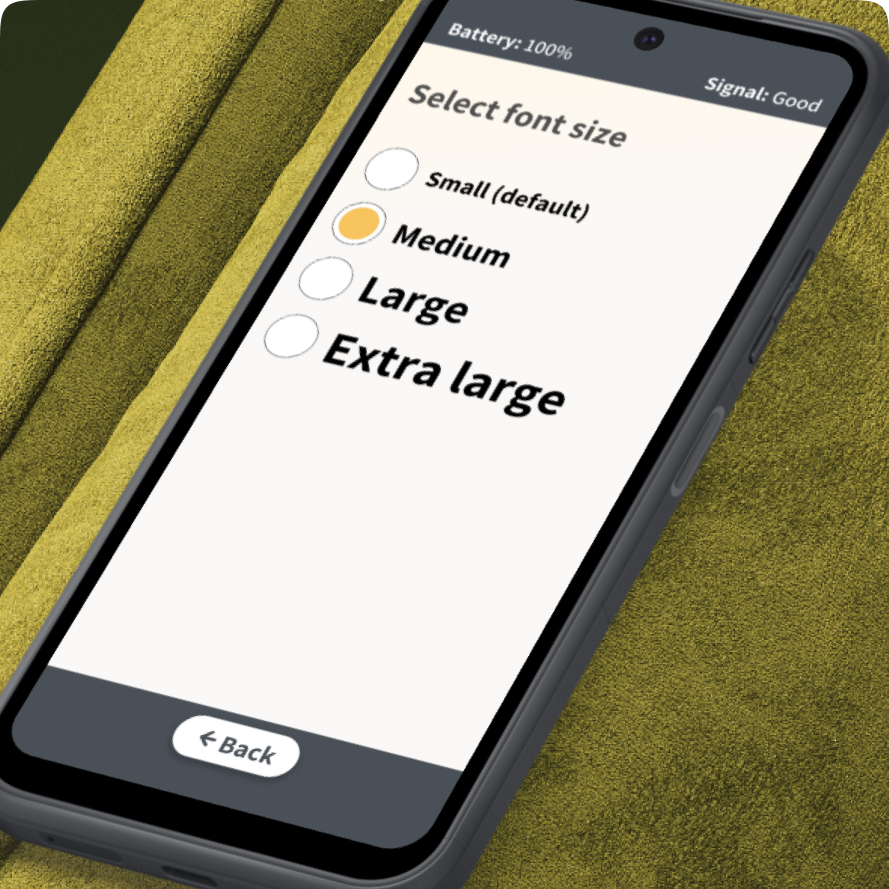You can see full details of the easy pour kettle range and buy them here.
For my type of dementia, it is important to know that some of my symptoms such as depth perception, colour distinction and tremors in both hands make handling hot water a dangerous challenge.
Would the easy-pour kettle help me?
Putting the kettle into its stand was easy enough. I struggled a little, simply because the kettle is black and the stand is black. With having both depth perception and colour distinction issues, it proved a bit of challenge but I managed following the easy-to-follow instructions. My dad who has arthritis in his hands and fingers also gave the kettle a trial run to see if it would help him. The challenge I had putting the kettle in the stand was not a problem for him at all.
The kettle is very light empty and easy to handle for both me and my dad who has gripping problems.
Filling the kettle with cold water can be done by jug (purchase this separately) or by taking the kettle to the tap.
Again, a slight challenge for me, in that the button to open the lid is the same colour as the kettle, in my case black. So, I had someone show me where this button was as I could not see it. Once I knew, it was straight forward to fill the kettle. I used the jug method; my dad took the kettle to the tap with no issues.
The kettle has a clear window to show when it is half full or full limits. Clear enough to see for me. The kettle remains light enough and easy to grip when full.
Switching on the kettle proved a challenge again for me, as the switch is the same colour as the kettle, black. Once I identified the on/off switch, it was easy enough to do. My dad again had no issue here.
Once the kettle reaches boiling point it switches itself off. The kettle is quieter than some kettles I have had in the past.
The kettle has a nonslip pad which you can place under the kettle (sold separately). I tried it with the nonslip pad and without. I found there to be no difference on my kitchen worktop and neither did my dad. The nonslip pad, however, came in handy for the placement of the cup when pouring the hot water, otherwise it becomes a guessing game as to whether you have the cup in the correct position or not. My dad agreed with this.
I use a beaker with a lid and my dad uses a mug. Based on the size of the kettle you realistically get two mugs of water. Pouring the water is effortless, you simply tilt the kettle to the cup, mug, or beaker in my case and fill with hot water. The handle to tilt the kettle is placed in such a way that your hand is away from the steam.
The kettle is clever and does a great job. Easy to use, with none to minimal risk of burns. If you have tremors, or a gripping problem then this is the kettle for you!
I would like to state at this point that the designers have already identified the problems I struggled with and manufacture kettles that have contrasting colours. This product will make the lives of those living with dementia much better. The contrasting colours make it much easier to use and eliminates many of the challenges I faced using the single colour option.

About the author

Michael Booth
Michael is a former carer for his mom who lived with young onset Alzheimer’s disease for nine years and now himself lives with young onset Alzheimer’s disease. This gives him a view from both sides, a unique position. Michael is a Research Network volunteer and a member of the Innovations Board for the Alzheimer’s Society. Michael is also a member of the Geller Commission Advisory Board for people living with dementia; Experts by Experience Group for dementia; Brains for Dementia Advisory Board for Alzheimer’s Research UK; Young Dementia Network steering group member; Member of the NHS patient and Carer group (Dementia Advisor). Michael is a former Project and Technical Manager for a global electrical and electronic cable designer and manufacturer.
Michael tests a range of products sold on Alzheimer's Society's shop, as well as new products we are considering, providing a hands-on, honest assessment from someone living with dementia. We also share this feedback with the product suppliers and manufacturers to suggest improvements.
Author of the book:Dementia, you are not alone!


 0333 366 0035
0333 366 0035 







